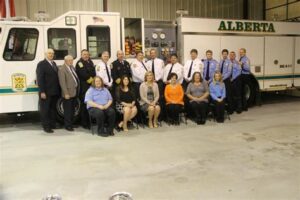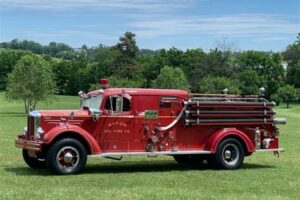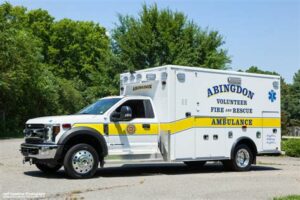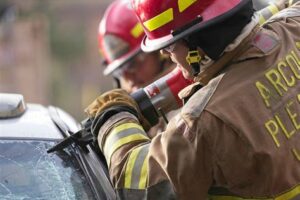Table of Contents
Looking for AED grants to equip your volunteer fire department? Discover funding opportunities and resources to obtain life-saving automated external defibrillators (AEDs) for your department. Ensure the safety of your community and enhance emergency response capabilities with these valuable grants.
Aed Grants For Volunteer Fire Departments are a lifeline for those who risk their lives to protect our communities. With limited resources and a constant need for updated equipment, these grants serve as a crucial support system for volunteer fire departments across the nation. From rural areas to bustling cities, these brave men and women rely on AEDs (Automated External Defibrillators) to save lives in critical situations. However, obtaining these life-saving devices can be a daunting task, especially for departments operating on limited budgets. That’s where AED grants come into play, bridging the gap between the dire need for equipment and the financial constraints faced by these selfless heroes.
Introduction
In the world of firefighting, volunteer fire departments play a crucial role in ensuring the safety and well-being of communities. These selfless individuals dedicate their time, effort, and often risk their lives to protect others. However, equipping these departments with the necessary resources can be a challenge. Fortunately, there are AED grants available specifically tailored to support volunteer fire departments, enabling them to enhance their emergency response capabilities.
Understanding AED Grants
AED stands for Automated External Defibrillator, a portable device that can deliver an electric shock to the heart in case of sudden cardiac arrest. AED grants provide financial assistance to organizations, such as volunteer fire departments, to acquire these life-saving devices. These grants aim to bridge the gap between limited funding and the need for vital equipment, ensuring that communities have access to essential medical interventions during emergencies.
The Importance of AEDs for Volunteer Fire Departments
Volunteer fire departments are often the first responders in emergencies, including cardiac arrests. Having an AED readily available can significantly increase the chances of saving a life. Every minute without defibrillation decreases survival rates by 7-10%, making rapid access to AEDs critical. With limited resources, many volunteer fire departments struggle to afford these devices, which is where AED grants come into play.
Eligibility Criteria for AED Grants
While the specific eligibility criteria may vary depending on the grant provider, most AED grants for volunteer fire departments require the following:
1. Non-profit status:
Volunteer fire departments must be registered as non-profit organizations or affiliated with a non-profit entity.
2. Demonstrated need:
Departments must demonstrate the need for an AED based on their response area, call volume, and potential cardiac risk factors within the community.
3. Training and maintenance plan:
Applicants are usually required to outline a training program for personnel on AED usage and provide details on how they will maintain and service the devices.
Applying for AED Grants
To apply for AED grants, volunteer fire departments typically need to complete a grant application form provided by the grantor. The application often requires detailed information about the department’s mission, community demographics, financial status, and the specific need for an AED. In addition, departments may have to submit supporting documents, such as tax-exempt status certification and letters of recommendation.
Popular AED Grant Providers
Various organizations and entities offer AED grants to support volunteer fire departments. Some well-known providers include:
1. American Heart Association (AHA):
AHA provides grants through its Community Impact Grant Program, which aims to improve community health and increase access to emergency care.
2. Firehouse Subs Public Safety Foundation:
This foundation offers grants specifically for public safety organizations, including volunteer fire departments, to enhance their capabilities and equipment.
Benefits of AED Grants
AED grants bring several benefits to volunteer fire departments:
1. Enhanced emergency response:
With access to AEDs, volunteer firefighters can provide immediate life-saving interventions during cardiac emergencies, significantly improving survival rates.
2. Financial relief:
AED grants alleviate the financial burden on volunteer fire departments, allowing them to allocate their limited funds to other critical needs.
3. Community support:
By receiving AED grants, fire departments showcase their commitment to community safety, fostering trust, and appreciation among residents.
Conclusion
AED grants play a vital role in supporting volunteer fire departments, enabling them to acquire the necessary equipment to save lives during emergencies. These grants not only provide financial assistance but also reinforce the importance of community safety. By ensuring that volunteer fire departments have access to AEDs, we enhance the overall emergency response capabilities and strengthen the fabric of our communities.
AED Grants for Volunteer Fire Departments: Empowering Communities with Lifesaving Equipment
In an effort to enhance emergency response capabilities in volunteer fire departments, AED grants play a vital role in providing these departments with crucial lifesaving equipment. By equipping these departments with automated external defibrillators (AEDs), communities can potentially witness a significant decline in fatalities caused by cardiac arrest and other related emergencies.
The Importance of AED Grants: Saving Lives in Volunteer Fire Departments
Access to Innovative Technology: A Lifeline for Volunteer Fire Departments
As technology continues to revolutionize emergency response, providing AED grants to volunteer fire departments helps bridge the gap between their limited resources and the advanced medical equipment required to save lives. These grants enable departments to acquire AEDs, ensuring they have quick access to this cutting-edge technology, subsequently reducing response time and increasing survival rates in emergency situations.
Grants for Proper Training: Education is Key in Effective AED Usage
In addition to AED grants, the importance of comprehensive training programs cannot be understated. Alongside providing the equipment, elected officials and organizations issuing grants for volunteer fire departments also focus on offering certified training programs that educate first responders on the correct usage and maintenance of these life-saving devices. This proactive approach ensures the AEDs are efficiently utilized, empowering firefighters to confidently jump into action during critical moments.
AEDs in Rural Areas: Addressing the Specific Needs of Volunteer Fire Departments
Volunteer fire departments located in rural areas often face unique challenges due to limited resources and long response times. AED grants specifically tailored to these departments are essential, as they help bridge the healthcare gap faced by rural communities. By equipping these departments with AEDs and providing training opportunities, these grants enable faster emergency response and boost survival rates, ultimately safeguarding the lives of residents in these remote areas.
Public-Private Collaborations: A Win-Win for Volunteer Fire Departments
Recognizing the importance of AED grants, public and private entities have come together to form collaborative partnerships that go beyond simply providing funding. These collaborations involve training opportunities, donations, awareness campaigns, and even initiatives that help fundraise for additional AEDs. By combining efforts, these collaborations maximize the impact of AED grants, resulting in safer communities and enhanced emergency response.
The Economic Implications of AED Grants: Saving Lives & Reducing Costs
While the primary goal of AED grants for volunteer fire departments is to save lives, they also have significant economic implications. By improving the survival rates of cardiac arrest cases, AEDs reduce the burden on healthcare facilities, lowering long-term medical costs for both patients and communities. This creates a positive ripple effect, allowing funds to be redirected towards other crucial areas of public safety.
Community Engagement: Involving Citizens to Sustain AED Grant Initiatives
Embracing the concept of community engagement, AED grants also encourage public involvement and support. Volunteer fire departments often organize public awareness campaigns and community CPR training sessions, empowering citizens to play an active role in emergency response. By educating and involving the public, AED grant initiatives create a sustainable safety net for communities, reinforcing the impact of these life-saving grants.
The Future of AED Grants: Ensuring Continuous Access to Lifesaving Equipment
As the importance of AED grants becomes more apparent, efforts are being made to ensure that volunteer fire departments have continuous access to this lifesaving equipment. With periodic evaluations, new grant opportunities, and long-term support from both public and private entities, the future looks promising for these departments as they work towards creating safer communities and enhancing emergency response capabilities.
In recent years, the importance of volunteer fire departments in maintaining public safety has become increasingly evident. These selfless individuals dedicate their time and risk their lives to protect their communities from the devastating effects of fires and other emergencies. However, due to limited resources and funding, many volunteer fire departments struggle to acquire the necessary equipment and training to effectively carry out their duties.
Recognizing this pressing issue, the U.S. government has implemented the AED grants for volunteer fire departments. AED stands for Automated External Defibrillator, a life-saving device used to restore normal heart rhythm in cardiac arrest cases. These grants aim to provide volunteer fire departments with the financial means to acquire and maintain AEDs, ultimately enhancing their emergency response capabilities.
The significance of AED grants:
Enhancing emergency response: By providing volunteer fire departments with AEDs, these grants play a crucial role in improving their ability to respond promptly and effectively to cardiac arrest cases. Time is of the essence in such emergencies, and having an AED readily available can significantly increase the chances of saving a life.
Ensuring community safety: Volunteer fire departments serve as the first line of defense in protecting communities from fire-related disasters. However, their ability to perform their duties can be hindered by the lack of resources. AED grants help address this issue, ensuring that volunteer fire departments have access to the necessary equipment to safeguard their communities.
Supporting volunteer firefighters: Volunteer firefighters often face challenges in balancing their commitment to public safety with their personal and professional lives. The provision of AED grants acknowledges and supports their dedication, enabling them to fulfill their roles more effectively and safely.
The impact of AED grants:
Lifesaving potential: AEDs have proven to be instrumental in saving lives during cardiac arrest incidents. By equipping volunteer fire departments with these devices, AED grants have the potential to significantly increase survival rates in their communities.
Improved emergency preparedness: AED grants not only provide the devices themselves but also help volunteer fire departments establish comprehensive cardiac arrest response protocols and training programs. This ensures that volunteers are well-prepared to handle emergencies, further enhancing their overall emergency response capabilities.
Community engagement and support: AED grants not only address the immediate needs of volunteer fire departments but also foster a sense of community engagement and support. By investing in the safety and well-being of their communities, these grants encourage active participation and collaboration between the public and volunteer firefighters.
Overall, the implementation of AED grants for volunteer fire departments is a commendable initiative that recognizes the invaluable services provided by these selfless individuals. By providing the necessary resources to enhance their emergency response capabilities, these grants contribute to the overall safety and well-being of communities across the country.
Thank you for visiting our blog today and taking the time to learn about the importance of AED grants for volunteer fire departments. We hope that this article has shed light on the critical role that these grants play in saving lives and supporting our brave firefighters. As journalists, it is our duty to inform and educate our readers, and we are grateful for the opportunity to do so.
In recent years, the demand for AEDs (automated external defibrillators) has significantly increased, as more and more people recognize their life-saving potential. However, for many volunteer fire departments, acquiring these devices can be a financial challenge. This is where AED grants come in – they provide a vital lifeline for these departments, ensuring that they have access to the necessary equipment to respond effectively to cardiac emergencies.
By securing AED grants, volunteer fire departments can not only enhance their emergency response capabilities but also provide a safer environment for their communities. Cardiac arrests can happen anywhere and at any time, and having an AED on hand can mean the difference between life and death. These grants enable fire departments to purchase AEDs, train their personnel in their usage, and ensure that they are readily available when needed.
As we conclude this article, we want to emphasize the urgent need for support and funding for AED grants. Every year, countless lives are lost due to cardiac arrests, and the availability of AEDs can greatly improve survival rates. We encourage you to spread awareness about this issue, engage with your local community, and advocate for increased funding for AED grants. Together, we can make a difference and create safer communities for everyone.
Once again, we appreciate your time and interest in learning about AED grants for volunteer fire departments. Stay informed, stay safe, and remember that your support can help save lives. Thank you for being a part of this important conversation.
Video Aed Grants For Volunteer Fire Departments
Here are some common questions people also ask about AED grants for volunteer fire departments, along with their corresponding answers:
What are AED grants?
AED grants refer to financial aid programs or funding opportunities that are specifically designated for the purpose of acquiring Automated External Defibrillators (AEDs). These grants aim to support organizations, such as volunteer fire departments, in obtaining these life-saving devices.
Why are AED grants important for volunteer fire departments?
AED grants are crucial for volunteer fire departments as they often rely on limited resources and funding. By securing AED grants, these departments can overcome financial barriers and equip themselves with essential equipment that can significantly enhance their emergency response capabilities and improve the chances of saving lives.
How can volunteer fire departments apply for AED grants?
The application process for AED grants varies depending on the grant provider or organization offering the funding. Typically, volunteer fire departments can find relevant information and application instructions on the grant provider’s website or by contacting them directly. It is essential to carefully review the eligibility criteria and required documentation before submitting an application.
What factors are considered when awarding AED grants?
The criteria for awarding AED grants can differ based on the grant program. However, common factors that are often taken into consideration include the department’s need for AEDs, their geographical location, the number of people served by the department, their response time and effectiveness, as well as their commitment to community safety and public education initiatives.
Are AED grants available for volunteer fire departments nationwide?
Yes, AED grants are typically available to volunteer fire departments across the United States. Many grant programs seek to support organizations in various regions, both rural and urban. However, availability may vary depending on the specific grant and its funding limitations.
Can volunteer fire departments receive multiple AED grants?
Yes, it is possible for volunteer fire departments to receive multiple AED grants. This is especially true if they meet the eligibility criteria and requirements of different grant programs. However, it is important to note that each grant program may have its own rules regarding the number of grants an organization can receive.
Remember to consult the specific grant provider or organization for accurate and up-to-date information regarding their AED grant application process.






